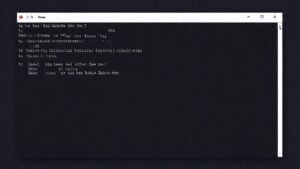Swatting Incidents on Campuses: Unraveling the Purgatory Threat
- THE MAG POST

- Aug 31
- 3 min read

Swatting Incidents on Campuses: Unraveling the Tactic
Across several campuses in the United States, a disturbing pattern of false emergency calls has stretched police resources and unsettled student life as the new academic year begins. This is not a single incident but part of a broader, coordinated tactic that exploits digital networks and fear to shape real world outcomes.
Swatting: How False Alarms Are Generated and Broadcast
Opportunistic tactics and timelines: An online group calling itself Purgatory has claimed responsibility for a series of alarming calls aimed at drawing armed responders to universities. The cadence of the hoaxes aligns with the start of the school year, suggesting a deliberate attempt to maximize disruption when students are returning, classes resume, and campus routines are most vulnerable to interruption. The pattern mirrors earlier episodes linked to bomb scares and shootings, indicating a broader strategy that leverages real assets like dispatch centers and police units to create cascading fear and logistical strain.
Digital trails and Telegram channels: Much of the signaling occurs on encrypted platforms such as Telegram, where posts and public channels serve as both a bragging space and a crude briefing tool for participants. Cybersecurity experts and law enforcement note that verification remains a challenge, as claims emerge from online personas and unverified accounts. The tension between open information and verified threat assessment is a central issue for campuses and emergency responders alike.
Campus Safety, Law Enforcement, and Public Policy
Immediate campus disruption and resource allocation: Swatting events elicit rapid responses from campus police, local law enforcement, and sometimes national agencies. The sudden deployment of officers, tactical units, and emergency medical teams disrupts classes, dorm life, and campus events, creating a climate of anxiety that extends beyond the initial incident. The aim is often to overwhelm, confuse, and test the resilience of the campus safety infrastructure.
Policy responses and preventative strategies: In the wake of such episodes, institutions are revisiting incident response protocols, verification procedures, and interagency coordination. Training exercises, clearer lines of communication between campus safety and city authorities, and public awareness campaigns form part of a broader effort to reduce false alarms while preserving rapid response capabilities. Historical patterns show that a mix of technical safeguards, legal accountability, and responsible journalism is needed to curb the incentives for hoax calls and protect student wellbeing.
Ethics, Media Coverage, and Accountability
Media framing and misinformation risks: News coverage that amplifies unverified claims can inadvertently assist the spread of such hoaxes. Journalists face the challenge of reporting current events while avoiding sensationalism that could embolden future actors. Emphasizing verification, corroboration, and official statements helps preserve public trust and reduces the reputational harm to affected campuses and communities.
Accountability for online actors: The online group behind the hoaxes may boast of future exploits for a fee, raising questions about criminal liability across jurisdictions. Authorities are exploring avenues to trace digital footprints, prosecute those who orchestrate or profit from these calls, and deter others from participating in similar schemes. Tech platforms, legal frameworks, and cross border cooperation all play a role in shaping outcomes and reducing the harm inflicted on students and institutions.
Key Takeaways
Swatting incidents on campuses reveal a troubling convergence of online bravado and real world risk. While verification and due process remain essential, campuses must strengthen emergency readiness, foster transparent collaboration with local authorities, and invest in public education about suspicious activity. The episode also underscores the responsibility of media to report cautiously and the need for robust legal and technical countermeasures to deter these harmful actions.
Aspect | Details |
Incident type | Swatting — false emergency calls designed to draw law enforcement to a location such as a university |
Alleged actor | Purgatory, an online group; claims posted on Telegram; verification pending |
Reported pattern | Timed with the start of the school year; connected to shootings and bomb scares in earlier episodes |
Impact | Disrupts campus life, strains emergency resources, raises safety and security concerns |
Jurisdiction | Federal and local agencies analyzing cross border online activity |






















































Comments